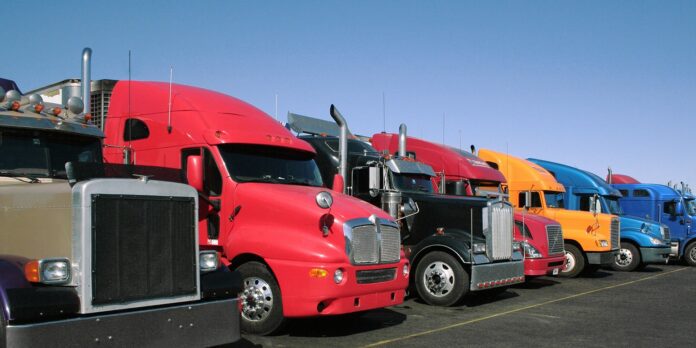
The trends have been different each year, and now with the global COVID-19 pandemic, the fleet performance has been affected to a much larger extent. Keeping this in mind, the truck trader association has kept into consideration some key things that can reduce fleet costs.
It is inevitable to keep the transportation industry and logistics moving in the right direction to serve people across the globe. So here are the ten essential things to keep in mind, thereby cutting costs for commercial vehicles fleet. It will inevitably affect organizational productivity and profitability.
- OPT FOR FLEET SIZE REDUCTION
To reduce the overall cost, it would be a better idea to reduce the number of commercial vehicles in the fleet. As per the statistics, the total ownership cost ranges up to 8000 USD per industrial motor. Reducing even around 50 of these vehicles can make a change in the fixed expenses, thereby decreasing the overall fleet operating costs. The businesses can benefit as high as 15-20% in savings.
- REDUCE THE DISTANCE TRAVELLED
How much distance the fleet is needed to travel is handled by the fleet managers. However, day to day monitoring of the total distance traveled is not possible as the route is fixed and pre-defined. Keeping that in mind, the not so essential trips should be skipped, and this can affect the total operational costs by reducing the distance traveled.
Here, the GPS and telematics solution come into being and other tools that can discourage excess travel. The fleet managers need to check with the truck trader for providing mileage reports along with a proper audit check. It can inevitably affect the reduction from small to moderate in the total costs.
- FOCUS ON BETTER FUEL ECONOMY
Government regulations have a more significant impact on vehicle size and weight. There are some strategies for improving the fuel economy, thereby reducing fuel consumption overall.
The strategies include reducing vehicle size and weight by downsizing the commercial motor as per requirements. The fleet managers can take responsibility for lowering commercial vehicle size. Suitable options should be taken care of like avoiding mechanical failure, etc.
The second strategy is to make use of innovative automotive technologies. The current demand for hybrid vehicles is trending, and these improve fuel economy too much extent. Meanwhile, using diesel engines have proven to be more economical than petrol engines. However, the former is the least clean fuel available in the market. Having a six-cylinder commercial motor consumes more fuel than using a four-cylinder motor.
The third one is to modify how the driver behaves and drives the vehicles. He may be hard in acceleration and braking, uses an excess of air conditioning, or the speeds are inconsistent. These factors do affect the overall fuel economy by up to 33%. It has a severe cost reduction potential, along with the former two strategies.
- THE FUEL COST SHOULD BE REDUCED
The fuel expenditure can be a major one that is handled by the fleet managers. However, the ups and down in fuel prices should be monitored by the managers and thus have control over fuel management for the fleet.
Despite the fuel costs, other practices such as weight reduction, optimal driving style, and monitored speeds should be taken care of even if the fuel prices are stable.
Several truck trader association members have opted for alternative fuel for savings. These can include natural or propane gas, which helps in bringing down the costs even less than diesel engines. Natural gas fuel is being used by private taxis at the airport, airport shuttle buses, transit buses, and farm vehicles.
- REDUCTION IN LIFESTYLE COSTS
There should be a reduction in frequent vehicle replacement as it adds to the cost. The fleet managers need to retain their vehicles until they reach a certain age where their replacement is necessary. But, several logistic companies have been found to operate vehicles beyond their optimal life. It increases maintenance costs, increased fuel costs as well as a reduction in utilization. These kinds of vehicles should be avoided and opted for a quick replacement.
The replacement plan can include factors such as new vehicle cost, projected resale value, maintenance and repair costs, payments, etc. The fleet managers, along with the truck traders, can prepare plans based on this as and when required.
- LOWER ACQUISITION COSTS
The commercial motor is an asset for the company, but it has wear and tear, so is the depreciation. However, the primary thing is to check how low is the acquisition cost that helps in overall fleet cost reduction. The fleet organizations should negotiate to get the best opportunity of savings by volume discounts. Some manufacturers provide hefty incentives for the phasing out vehicle models, but the managers need to check the lifecycle of that particular model if it is the best deal.
- EXPECT A HIGHER RESALE VALUE
In the above mentioned key points, we have discussed managing the depreciation and selling the vehicle when it reaches its optimal stage of the lifecycle. Some fleet companies often sell their vehicles to the employees, and it has its advantages such as,
- the driver takes better care of the vehicle
- transportation fee has better savings
- faster receipt of sale proceedings
Another method to get the best resale value is based on the color of the vehicle. For example, neutral colors or white color yields the best returns. The reconditioning of the vehicle should be avoided. Reducing the cost of sales also helps in improving residual gains.
- LOWER THE MAINTENANCE COSTS
There is a belief that after every specific distance traveled by commercial vehicles, they should get preventive maintenance. However, it is only required for particular vehicles that operate under severe conditions. For others, these maintenance costs should be avoided. Some truck manufacturer companies recommend the use of synthetic oil and thus extend the gaps between preventive maintenance costs. It will lower the overall maintenance cost from small to moderate.
Looking at the tires, they increase vehicle performance having an extended tread life, but the costs are much higher to maintain them as well. Keep in mind the OEM specified tires only.
- EFFECTIVE SAFETY MANAGEMENT
A well run fleet organization takes care of the safe operations of the vehicles. An effective safety management program lowers the crash costs and other benefits such as,
- reduce the risk of accidents
- reduction in the price of insurance
- driver productivity should be increased
- driver morale should be boosted
- enhance driver retention
Not only the fleet managers but the drivers also need to take care of the safety program to be successful. The same should be actively supported at all levels of the management hierarchy.
- LOWERING THE OVERHEAD COSTS
Overhead costs include costs like cost of management, administrative staff, cost of maintenance of building, facilities, computer systems, tools, and utilities. These costs cannot link to the price of vehicles as it is a separate entity. The cost reduction potential can be small to moderate if activity-based costing is put into force.








